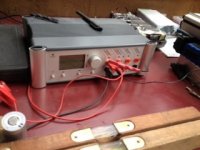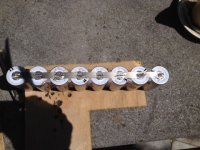Hello members,
After a long time I'm picking up my work to finish my diy battery pack.
A little history
One year ago I bought a secondhand escooter only for the LiFePo4 pack in it.
Now I haven test all the cells for there capacity and IR I can finally make a 28 Amp 48V battery pack!
It is maybe not a big pack but I'm happy that I can replace the dead gel accus!
The point were I need your advise is how to setup the spot welder?
I bought the DN-5 and a roll off 2Kg nickel band 10mm weight and 0,3mm thickness.
Now I have the problem to set it up right, one time it spot welding oke on a dead cell but the next try it will not work.
I've tried different 'stift' models from a sharp point to a flat square but nothing helps.
Can someone tell me the solution???
Can someone help me?
Ps: how many pressure is need to weld?
After a long time I'm picking up my work to finish my diy battery pack.
A little history
One year ago I bought a secondhand escooter only for the LiFePo4 pack in it.
Now I haven test all the cells for there capacity and IR I can finally make a 28 Amp 48V battery pack!
It is maybe not a big pack but I'm happy that I can replace the dead gel accus!
The point were I need your advise is how to setup the spot welder?
I bought the DN-5 and a roll off 2Kg nickel band 10mm weight and 0,3mm thickness.
Now I have the problem to set it up right, one time it spot welding oke on a dead cell but the next try it will not work.
I've tried different 'stift' models from a sharp point to a flat square but nothing helps.
Can someone tell me the solution???
Can someone help me?
Ps: how many pressure is need to weld?




